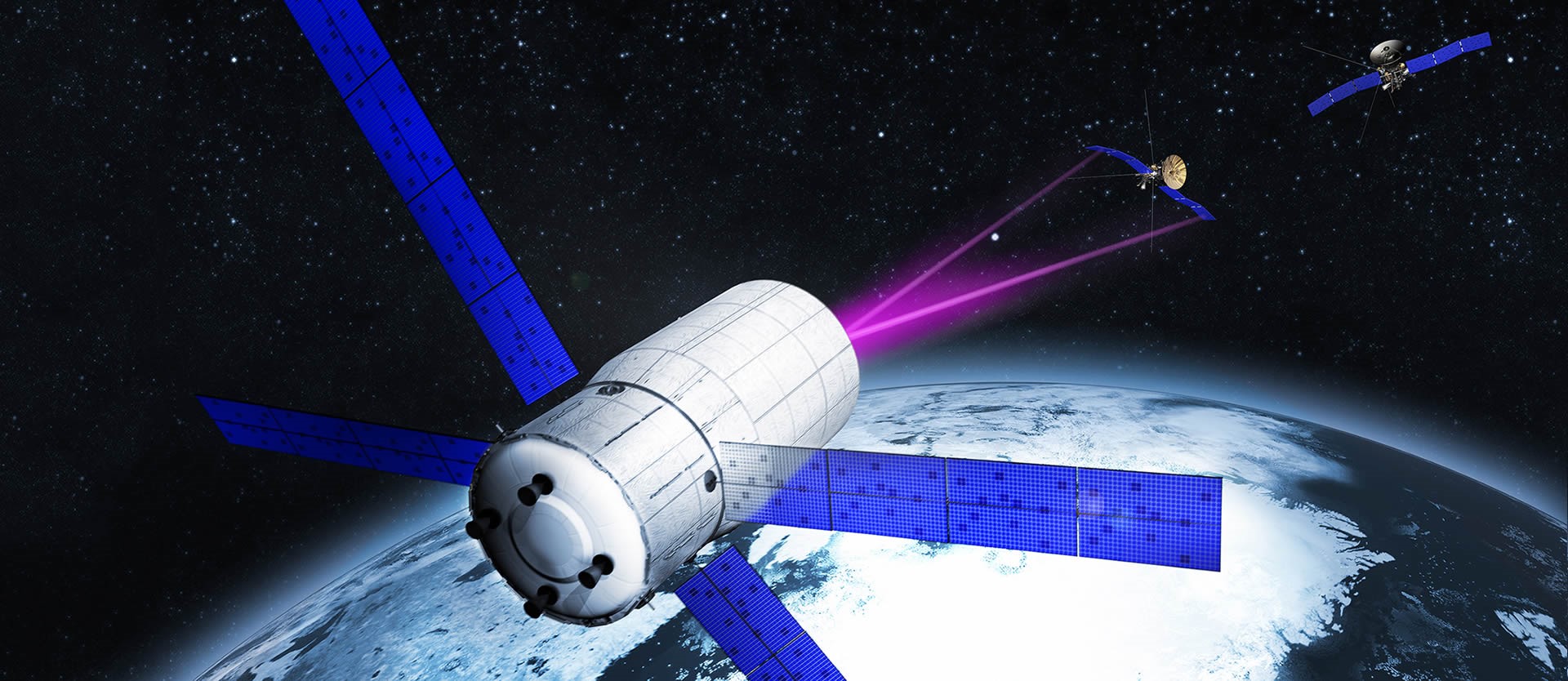Laser-based Monitoring of Space Debris

Space debris presents a significant risk for manned and unmanned space flights. Decommissioned or wrecked satellites, fragments of space capsules and waste voided during space missions can collide with active satellites and freight shuttles. Moreover, such collisions themselves greatly increase the level of risk, as they in turn generate huge numbers of new debris particles.
It is therefore imperative that space debris be carefully tracked and monitored. Experts based at the Fraunhofer Institute for Applied Optics and Precision Engineering (IOF) in Jena have taken up the challenge and developed a special laser expressly designed for the task.
“Our system can reliably determine the positions and trajectories of objects in Earth orbit with centimeter precision,” explains Dr. Thomas Schreiber, Head of the Fiber Laser Group at the IOF. “Laser systems such as ours must be highly sensitive, yet robust enough to withstand the extreme conditions encountered in space. In addition, they must be able to survive the high stresses that accompany the launch phase, during which the instruments are exposed to very strong vibrational forces.” Once in Earth orbit, the laser system must cope with the high levels of radiation and extreme fluctuations in temperature, as well as making the best use of the low levels of energy available to power it. Finally, the system must have the ability to monitor and analyze debris over very large distances.
The laser system designed by the researchers in Jena makes use of glass fibers in which the laser beam is propagated and amplified before being used to probe the extraterrestrial environment. “In order to measure the speed, trajectory and rotation rate of particles in space, our laser system emits pulses of coherent light in various directions in space. Each pulse lasts for a few billionths of a second,” as Schreiber‘s colleague Dr. Oliver de Vries explains. The system can generate thousands of pulses per second. If the pulsed beam interacts with an object in the targeted direction, part of the radiation is reflected back to a special scanner that is integrated into the onboard system. In spite of the very high propagation speeds of the emitted and reflected signals, the journey out and back takes a measurable time. The time taken to complete each round-trip is then converted into a distance and a coordinate in 3D space. The sensors responsible for detection of the reflected light are capable of picking up light intensities equivalent to billionths of that of the originally emitted pulse.
The principle developed by the researchers at the IOF – initially for the firm Jena-Optronik GmbH and the German Aerospace Center (DLR) – has already been successfully tested in the course of the docking of a supply module with the International Space Station (ISS). Another advantage of the tracking system is its very low energy consumption. At 10 watts, the power required to drive the fiber-based laser is considerably less than that consumed by a conventional laptop.
Bild: Tracking space debris in near-Earth orbit: Laser technology developed by the Fraunhofer IOF. Copyright: Christian Süß – Fraunhofer IOF













